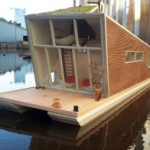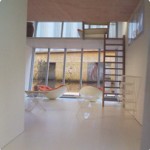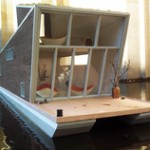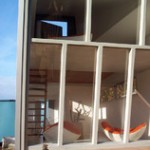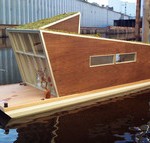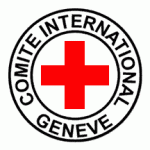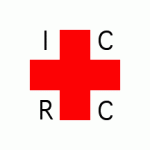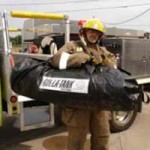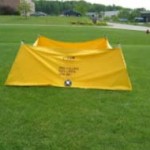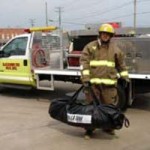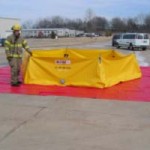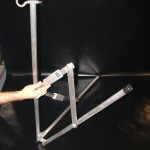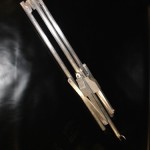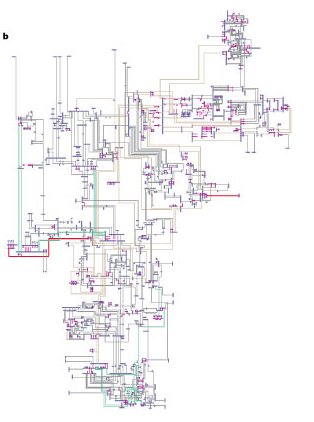Coolstuff and MetaCafe have videos which show the power of a focused solar array melting steel. (Click here for CoolStuff – Here for MetaCafe) It’s basic college mechanics – and also pretty amazing.
Author Archives: Jon
Q-Blox and VibrantHomeTown.com
In looking for simple community-usable planning tools -we’ve come across an impressive consultancy called Vibrant Hometown, and a 3-D modeling tool they’ve developed called Q-Blox. It’s not yet clear if their urban planning
consultancy takes into account Popular Logistics’ concerns about disaster risk mitigaton and response – or whether the Q-Blox are available without engaging their services. In any case – Vibrant Hometown
is certainly worth a look.
FastRadios.com
We’ve been casting about for two-way radio vendors – and sophisticated advice. And found, for our purposes, an amazing oufit in FastRadios.com – based in Naples, Florida – but they sell at very competitive prices and on very competitive terms (extended warranties, for instance, on batteries as well as radios). After a long conversation with Manzie Lawfer (purportedly their sales manager, but it seems that his function is more about finding configuration solutions). Lawfer was able to propose simple, elegant and inexpensive solutions to certain problems we’ve been having in designing a model comms system for community-based disaster response organizations. Being a natural-born cynic, and having spent most of my career cross-examining and interviewing all manner of fabricators and prevaricators – and being concerned about budget – I dropped several opportunities for him to propose more expensive solutions. Straight arrows, it seems, these guys. Look for several posts about solutions they’ve devised for clients – including using existing UPS systems in power failures and solar power in emergencies to keep comms up. Readers may want to start with their “Little Green Radio Book” (free).
SMASHING APPS: PROJECT MANAGEMENT TOOLS
has collected a number of project management tools – most if not all free. For community groups – disaster response
-related or other – there’s probably something useful for all but the most tech-savvy (or best-funded) groups.
Das Schwimmhaus
Via Design-Milk and Monoscope , Das Schwimmhaus Boot
:
For our usual purposes – principally housing/work platforms which can be used in floods – this design might not be as as stable as we’d like. Nonetheless – it’s a reminder of how beautiful things can be made with sustainable material.
Artist creates solar/wind powered "emergency respond
(Via Inhabitat) Which may, in fact, exceed FEMA’s exertions – despite the fact that, as Paul Villinski, a  New York-based artist has demonstrated, it’s entirely possible to construct livable/usable emergency structures which rely on solar and wind power. From Bridget Steffen at Inhabitat, Solar Powered Mobile Emergency Response Studio:
New York-based artist has demonstrated, it’s entirely possible to construct livable/usable emergency structures which rely on solar and wind power. From Bridget Steffen at Inhabitat, Solar Powered Mobile Emergency Response Studio:
Better yet, make sure you read the whole piece and see the images – the one above the jump, taken alone, doesn’t do it justice.NB: as of this writing – October 30th – Villinski’s bandwidth limit had been exceeded. Waiting and checking back later will, we think, be worth it.
History of the Red Cross Logo
Logo Design Love, a leading graphic design blog, has a short piece on the logos used by The International Red Cross, including the current claim by Johnson & Johnson that the logo infringes on their trademark when used by the Red Cross to brand goods sold, in part, as fund-raisers for the U.S. Red Cross and its state chapters.
On the one hand, it’s immediately recognizable. On the other – given questions about RC effectiveness and transparency – once it’s recognized, do we have a common understanding about what it means?
See also “Civil Defense Logo Dies at 67, and Some Mourn Its Passing,” (Times), and Wonkette’s Proud Symbol of Fear Replaced By Wuss Emblem.
Flagspot notes that Article 66 of the Geneva Protocols (1977), establishes this as the international civil defense symbol:
We hope return to this issue shortly. We’ll leave you with these variations of the ICRC symbol reported by Flagspot:
Interview with signage expert Mies Hora
 Just came across a remarkable interview of Mies Hora (“Navigating Today’s
Just came across a remarkable interview of Mies Hora (“Navigating Today’s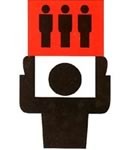 Signs – An Interview with Mies Hora”)(TinyUrl here ) by Stev Heller in the AIGA blog. Mies Hora is the founder of UltimateSymbol, which publishes books and usable electronic images of signs (as well as fonts and some other goodies). In a sense, these books make him the heir to Henry Dreyfuss
Signs – An Interview with Mies Hora”)(TinyUrl here ) by Stev Heller in the AIGA blog. Mies Hora is the founder of UltimateSymbol, which publishes books and usable electronic images of signs (as well as fonts and some other goodies). In a sense, these books make him the heir to Henry Dreyfuss
and Otto Neurath.
quiet revolution: elegant solution(s) to wind-power problems
One of the basic problems with wind power capturing wind regardless of direction. Ask any sailor. A number of turbine designers have solved this problem with vertical turbines, which will turn regardless of wind direction. Quiet Revolution, a London-based firm, has one model in production and producing power all over the United Kingdom. Installations of the Q5 turbine, according to quiet revolution, numbered 25 in June of this year, and were expected to top 100 by the end of the year. Quiet Revolution’s FAQ
describes the advantages of the QR5, which sounds ideal for locations like lower Manhattan: coastal, with a pre-Revolutionary street grid (i.e. narrow streets) and extremely tall buildings, which conspire to amplify windspeed. From the quiet revolution FAQ:
What are the advantages of quietrevolution turbines?
The qr5 is a vertical axis wind turbine that we have designed specifically for the built environment:
* it is much more appropriate for winds near and around buildings, which are characterized by gusty windspeeds and constantly shifting wind direction.
* it is significantly quieter because the blade tip speed is lower.
* it is more easily integrated in buildings and on towers.
* its active control system uses gust tracking to maximize power harnessed from the wind.
QuietRevolution has a number of other systems in development. We think we might like to see a much smaller model, because they’re so nice to look at. Aesthetic considerations aside, we often ask about how new energy technologies can be scaled up; – if one our goals is to decentralize the grid, lots of relatively small and local production will be essential.
Arb Design (Denmark) – digital planning tool
My first thought was how intuitive and elegant an interface:
Low tech technology like index cards, colored sticker dots and a whiteboard is a fast way to visualize and change a plan. The Digital Planning Board is not meant as a replacement of this but as a tool for distributed teams, enhanced client communication and quicker storage and search functionality.
Using User Stories To Define Tasks
The work planned for an iteration is divided into tasks with a clearly defined deliverable and these tasks are represented as User Stories. User stories are represented by story cards and will not hold all information about a given task but enough information to remind involved parties what the requirements are. Ron Jeffries describes it as “The card is a token representing the requirement”.
The Basic Rules of a Planning Board
A planning board is managed using these basic rules:
- A lane represent a person or a team.
- Blocks represent a task
- The size of a block displays the estimated time to complete the task.
But Arb’s designers took this many steps further – ending up with an interface which looks like this:
. Larger explanation and further resources here.
Portable water container – from Toolmonger
Their focus, of course, is different from ours, but Toolmonger is an incredible site – often showing emergency response/reconstruction tools we’d never hear of otherwise. Here’s one the Rol-La-Tank: (or Fol-Da-Tank, which might be the company name, or the name of the product line). They’ve got both URL’s Foldatank.com and Fol-Da-Tank – this should give interested readers enough to find them.
Thanks to Benjamen Johnson of Toolmonger.
Infographics and more: Mike Dickison
Pictures of Numbers is one of the websites run by Mike Dickison, an accomplished polymath who’s done some excellent work in information design with scientific and other information. A typical post compares two ways of looking at religious attitudes in a set of countries; his point (if I understand correctly) is that one often has options of putting much richer data into a single information graphic. His solution – entirely workable – would never have occurred to me.
[Readers will notice an uptick in information graphics posts as we are trying to prepare a number of visual aids – initially a set which tries to explain our purpose here atPopular Logistics: to examine the intersection between the sets of policy problems generally named “disaster preparedness,” “public health,” “environmental policy,” “energy policy,” “transportation policy,” “urban planning,” and “terrorism.” They’ve all got common threads – and to a surprising extent, common solutions – and that’s what we’re here to explain. But we’d like to present a richer version of these arguments – with few words and many more graphics. Hence our return to the precincts of Edward Tufte – and his books, and other information designers. So – we apologize to any readers who regard these posts as “off-topic,” but promise that, in time, we’ll make clear these connections].
The post which nearly knocked me out of my chair was Graphical Octants – how to, readably, add a third axis to a standard X/Y axis – I’ve been wrestling with how to show three variables – for instance – for disaster preparedness interventions, wanting to demonstrate:
- Cost of intervention (in dollars)
- difficulty of implementation (does it require many people to make big changes in behavior, do something counterintuitive, take complicated or intimidating training, or require a big rearrangement of social status likely to engender resistance). One example – a thesis I’ll be expanding on in the near future – is that the American Cold War shelter program – even after President Kennedy’s promise to make fallout or blast shelters available to the entire population – probably foundered because of resistance to the civil rights movement: any public shelters built after Kennedy’s 1961 statement would have had to be, of necessity, either segregated or not segregated. Not to mention the mixing of the rich and poor in the same shelters. Hence – any government planner who wanted to address shelter construction had to consider local reactions to such issues.
- Time needed to implement (e.g., blast shelters are best built during initial construction, and done that way, would take many years. Encouraging the distribution of AM radios, on the other hand, could be done with public education programs, using existing social mechanisms to distribute them (local governments, religious institutions), using the market (buying large numbers to subsidize economies of scale, exempting them from sales tax).
Dickison has an elegant graphic solution to this problem in Graphical Octants . We hope to update this post with illustrations after speaking with Mr. Dickison.
Accuracy Aesthetics – visual representation of NYS Power Grid
I’ve been creating a series of diagrams – about systems, risks, disaster planning scenarios – and also thinking about other ways to model risks, mitigation and response strategies – the ideal solutions of course would all involve open source software. Since the government is already paying primarily no attention to building community based preparedness programs, good data solutions are critical – but so is the lowest possible prices (which is to say: Open Sourceand free. While I haven’t found or developed what I think will be sufficient, the information design community (that may not be the right name) has in it a very large propertion of very smart people. (The best, and I own every one of his books, is Edward Tufte
. Also his dog photos are the best.
So I thought that, as I cast about for the proper data metaphors – I’d note some of the coolest – some of which are just beautiful, clever – and may or may not provide solutions for the planners in our audience. So – for the moment – the New York State power grid
Liz Borkowski at Pump Handle on Pickens’ wind farm
Liz Borkowski at the Pump Handle has a few thoughtful words to say about T. Boone Pickens’ Texas wind project – I didn’t know that his stated larger plan is to free up natural gas for electricity production. I’d add only that – whatever the plan is, building wind capacity to power a few million households will likely demonstrate that wind is a profitable venture. And that’s good, notwithstanding Pickens’ involvement in the “Swift Boat” attacks on Senator Kerry in 2004.
Put another way – if a right-wing oil man is investing in wind – even if only as a hedge that counts as good news.
As always, Liz Borkowski and the Pump Handle crew are watching and making sense of details that matter.
FDA threatens Red Cross with criminal charges over blood supply
Stephanie Strom of the Times reports on persistent – over 15 years – difficulties with the Red Cross blood supply operation, which provides two-thirds of the organization’s revenue.
For 15 years, the American Red Cross has been under a federal court order to improve the way it collects and processes blood. Yet, despite $21 million in fines since 2003 and repeated promises to follow procedures intended to ensure the safety of the nation’s blood supply, it continues to fall short.
The situation has proved so frustrating that in January the commissioner of food and drugs attended a Red Cross board meeting – a first for a commissioner – and warned members that they could face criminal charges for their continued failure to bring about compliance, according to three Red Cross officials who attended the meeting and requested anonymity because Red Cross policy prohibits public discussion of its meetings with regulators.
If fear is a motivator, we’re happy to help out in that way,” said Eric M. Blumberg, deputy general counsel at the Food and Drug Administration, though he declined to confirm what the commissioner, Andrew C. von Eschenbach, said at the meeting.
Some critics, including former Red Cross executives, have even suggested breaking off the blood services operations from the rest of the organization, as the Canadian Red Cross did a decade ago.
The problems, described in more than a dozen publicly available F.D.A. reports – some of which cite hundreds of lapses – include shortcomings in screening donors for possible exposure to diseases; failures to spend enough time swabbing arms before inserting needles; failures to test for syphilis; and failures to discard deficient blood.
In some cases, the lapses have put the recipients of blood at risk for diseases like hepatitis, malaria and syphilis. But according to the food and drug agency, the Red Cross has repeatedly failed to investigate the results of its mistakes, meaning there is no reliable record of whether recipients were harmed by the blood it collected.
The Red Cross, which controls 43 percent of the nation’s blood supply, agrees that it has had quality-control problems and is working to fix them. Both its officials and the drug agency point out that none of the identified problems involve the most serious category of infractions. For instance, the Red Cross does a good job of testing for H.I.V. and hepatitis B, officials on all sides agree. And in general, Red Cross blood is regarded as some of the safest in the world.
Still, the drug agency says, the problems that remain in screening donors and following protocols for collection add unnecessary risk to blood transfusions, almost five million of which were done in 2007, according to the National Heart, Lung and Blood Institute.
“This is a critical piece of the public health infrastructure,” Mary A. Malarkey, director of the Office of Compliance and Biologics Quality at the drug agency, said in an interview. “I know it’s difficult to get so many people trained and properly supervised, but it has to be done.”
This week, the agency sent the Red Cross the results of yet another recent investigation that makes Ms. Malarkey’s point: From December 2006 to April 2008, the Red Cross distributed more than 200 blood products that it had already identified as problematic, according to the investigation report.
Fifteen years under court supervision without progress. Doesn’t this suggest some change in approach?
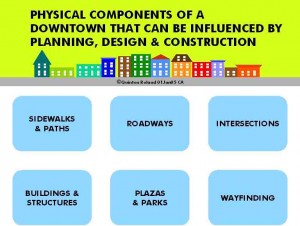
![Reblog this post [with Zemanta]](http://img.zemanta.com/reblog_e.png?x-id=3c89f027-cb54-4171-a3cf-84b5d28fd18a)
